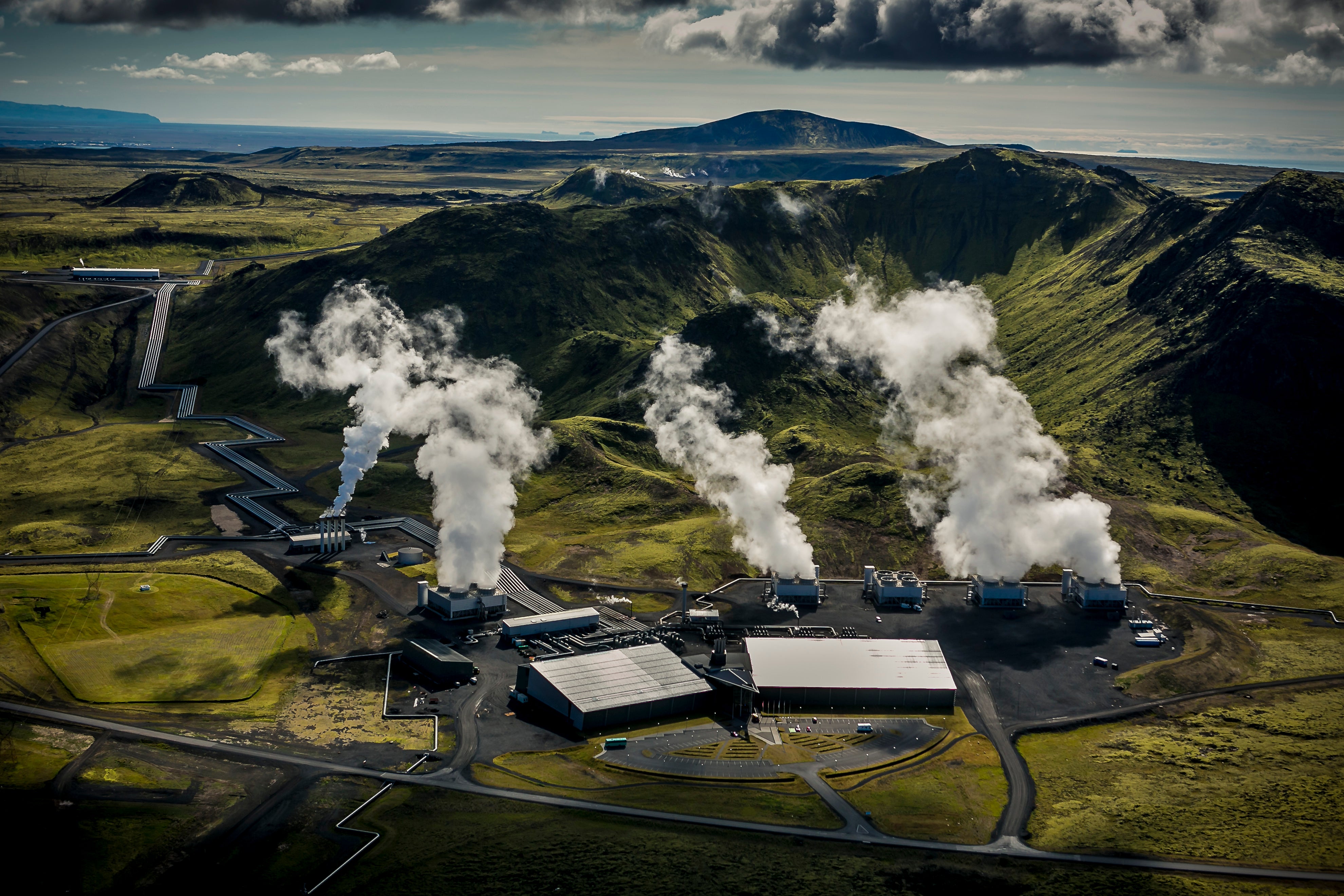World’s biggest carbon removal machine ‘freezes over’ in Iceland
Enormous device to halt global warming brought to heel by unusually cold weather

The company running the world’s largest carbon removal machine has been forced to make modifications to the equipment after freezing weather in Iceland caused the technology to stop working.
As a result of the malfunctions in recent weeks, the Orca machine outside Reykjavik is running behind schedule and is still yet to hit its targetof removing 4,000 tonnes of carbon dioxide from the air each year.
The system, run by Swiss company Climeworks, was launched in September 2021 and works by drawing in air using giant fans and fabric tubes. This air is brought into contact with chemical filters which selectively capture CO2 while releasing other gases such as nitrogen and oxygen.
The pure CO2 gas is then mixed with water and injected deep into basalt rock, where it will mineralise into rock itself within around two years.
However, the cold Icelandic weather has caused setbacks, according to report in the New Scientist.
An especially cold winter this year caused basic mechanical complications with components such as belt drives particularly impacted by the freezing temperatures.
“It’s not high-tech stuff. We had to redesign parts of, not the core technology, but the technology around it, to adapt to the weather,” said Christoph Beuttler, head of climate policy at Climeworks.
After changes to some components, the system is again working as expected.
“It’s a very good example of how important it is to deploy now and to get the experience,” added Mr Beuttler/
Though it is the world’s largest such machine, the device is still operating on a small scale. Even when it hits full capacity, sucking up 4,000 tonnes of CO2 a year will deal with a tiny fraction of global emissions, which totalled 31.5 billion tonnes in 2020.
However, carbon capture technology is regarded as an essential tool in tackling the climate crisis, along with nature-based solutions for absorbing greenhouse gases such as forest expansion, regeneration of seagrass beds and peat bogs, as well as humans making radical cuts to emissions in the first place.
In its latest report the IPCC said it was "almost inevitable" that carbon capture technology would be required to help remove climate-altering gases from the atmosphere, but cautioned that such technology should not be a substitute for ending dependence on fossil fuels as soon as possible and cutting emissions.
According to the New Scientist, Climeworks is planning a bigger project called “Mammoth,” which could have 10 times the capacity of Orca.
Join our commenting forum
Join thought-provoking conversations, follow other Independent readers and see their replies
Comments
Bookmark popover
Removed from bookmarks